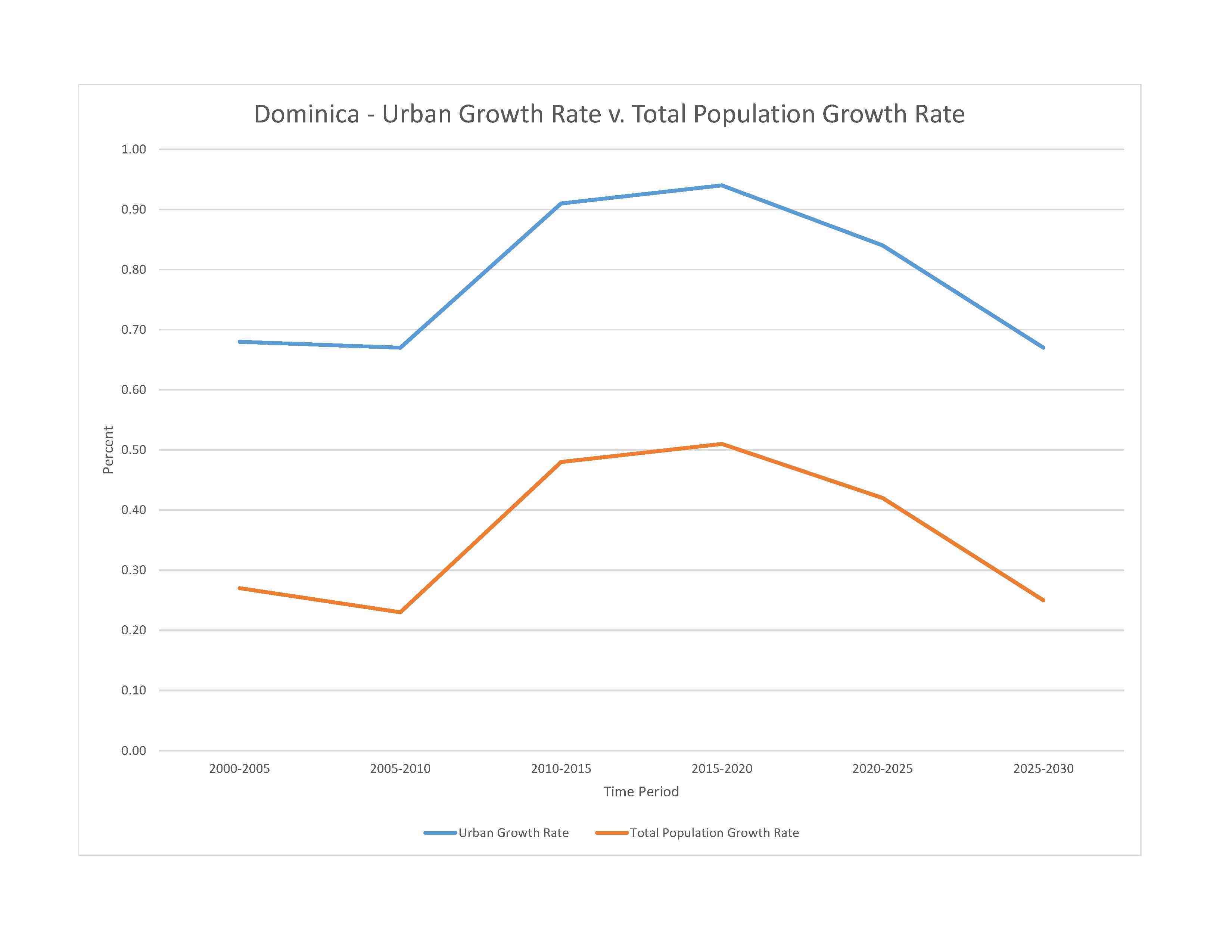
74,656 (2023 est.)
noun: Dominican(s)
adjective: Dominican
African descent 84.5%, mixed 9%, Indigenous 3.8%, other 2.1%, unspecified 0.6% (2011 est.)
English (official), French patois
Roman Catholic 52.7%, Protestant 29.7% (includes Seventh Day Adventist 6.7%, Pentecostal 6.1%, Baptist 5.2%, Christian Union Church 3.9%, Methodist 2.6%, Gospel Mission 2.1%, other Protestant 3.1%), Jehovah's Witness 1.3%, Rastafarian 1.1%, other 4.3%, none 9.4%, unspecified 1.4% (2011 est.)
0-14 years: 20.82% (male 7,954/female 7,592)
15-64 years: 65.82% (male 25,085/female 24,053)
65 years and over: 13.36% (2023 est.) (male 4,712/female 5,260)
total dependency ratio: 41.2
youth dependency ratio: 28
elderly dependency ratio: 13.2
potential support ratio: 7.6 (2021)
total: 36.5 years (2023 est.)
male: 36 years
female: 37.1 years
0.02% (2023 est.)
13.6 births/1,000 population (2023 est.)
8.1 deaths/1,000 population (2023 est.)
-5.3 migrant(s)/1,000 population (2023 est.)
population is mosly clustered along the coast, with roughly a third living in the parish of St. George, in or around the capital of Roseau; the volcanic interior is sparsely populated
urban population: 72% of total population (2023)
rate of urbanization: 0.84% annual rate of change (2020-25 est.)

15,000 ROSEAU (capital) (2018)
at birth: 1.05 male(s)/female
0-14 years: 1.05 male(s)/female
15-64 years: 1.04 male(s)/female
65 years and over: 0.9 male(s)/female
total population: 1.02 male(s)/female (2023 est.)
total: 11 deaths/1,000 live births (2023 est.)
male: 14.9 deaths/1,000 live births
female: 6.9 deaths/1,000 live births
total population: 78.5 years (2023 est.)
male: 75.5 years
female: 81.5 years
2.01 children born/woman (2023 est.)
0.98 (2023 est.)
N/A
improved: urban: 95.7% of population
unimproved: urban: 4.3% of population
5.7% of GDP (2020)
1.1 physicians/1,000 population (2018)
3.8 beds/1,000 population
27.9% (2016)
total: 6.32 liters of pure alcohol (2019 est.)
beer: 1.64 liters of pure alcohol (2019 est.)
wine: 0.29 liters of pure alcohol (2019 est.)
spirits: 4.39 liters of pure alcohol (2019 est.)
other alcohols: 0 liters of pure alcohol (2019 est.)
N/A
40.3% (2023 est.)
5.5% of GDP (2021 est.)
total population: NA
male: NA
female: NA
3,000-3,500 Kalinago (Carib) still living on Dominica are the only pre-Columbian population remaining in the Caribbean; only 70-100 may be "pure" Kalinago because of years of integration into the broader population
NOTE: The information regarding Dominica on this page is re-published from the 2024 World Fact Book of the United States Central Intelligence Agency and other sources. No claims are made regarding the accuracy of Dominica 2024 information contained here. All suggestions for corrections of any errors about Dominica 2024 should be addressed to the CIA or the source cited on each page.
This page was last modified 04 May 24, Copyright © 2024 ITA all rights reserved.